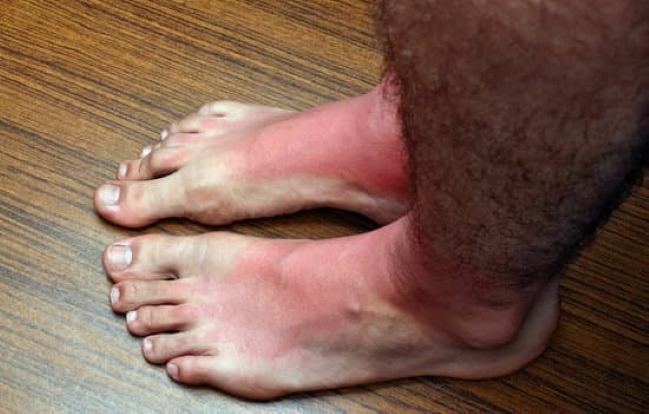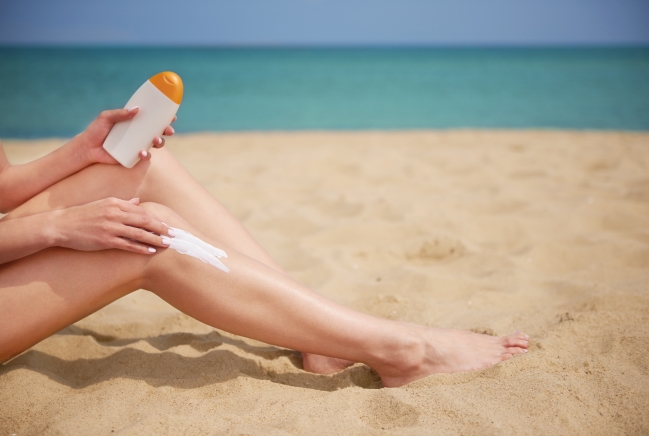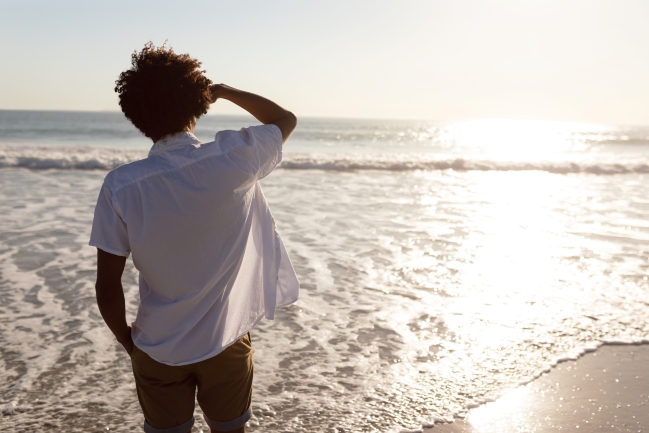In summer, many people are aware that their faces and arms need sun protection, but few think that their feet can also get tanned. Especially for barefoot shoe enthusiasts, in hot seasons, the thin and breathable upper of the shoes brings the feet closer to the sunlight – although this can provide a comfortable walking experience, it also exposes the feet to ultraviolet rays.
So, can feet really get tanned? If so, how should we protect ourselves?
Will the Feet Get Tanned? Unveiling Scientific Principles
Many people think that if their feet have thick skin and a strong stratum corneum, they are not afraid of sun exposure. In fact, although the stratum corneum of the feet is relatively thick, it is not completely free of melanocytes.
The structural characteristics of the skin on the feet
The thickness of the stratum corneum on the soles of the feet can reach 0.8 to 1.5 millimeters, making it one of the thickest parts of the human body. This can indeed block ultraviolet rays from penetrating to a certain extent, but the skin on the top of the feet and toes is thinner and more prone to tanning.
Ultraviolet penetrating ability
UVA (long-wave ultraviolet rays) have strong penetrating power. Even thick keratin can partially reach melanocytes, stimulating melanin production and thus causing slight “tanning” or color differences.
The possibility of sunburn
During prolonged exposure to the sun (such as at the beach, canyoning, or hiking), even if the feet do not turn significantly black, they may still experience peeling and cracking due to the dryness of the stratum corneum. This is actually a manifestation of sunburn.
In simple terms: Feet won’t darken as quickly as the face, but they do get affected by strong ultraviolet rays, especially in highly reflective environments such as beaches, snow, and water surfaces.
The Reasons Why Barefoot Shoes Make Feet More Prone to Tanning
The original design intention of barefoot shoes is to provide the feet with the maximum natural perception and movement space. Therefore, the upper of the shoes is mostly made of light and breathable materials, and some styles even have mesh, cutout or toe separation designs. This also brings more opportunities for ultraviolet exposure:
The upper is translucent
Mesh materials and thin fabrics can allow some light to pass through, and ultraviolet rays are no exception.
Exposed toes
The split toe or open design will expose the toes directly to the sun.
The water surface reflects twice as much sunlight
When wearing barefoot shoes on beaches, streams or wetlands, the reflection of ultraviolet rays from the water surface can increase the intensity of exposure to the feet by more than 30%.
Long-term outdoor activities
Barefoot shoes are often used for outdoor hiking, beach running, canyoning and other activities, where the sunlight is usually intense and lasts for a long time.
The Risk of Tanning and Sunburn on the Feet in Summer
Although tanning is merely a change in skin pigmentation, prolonged exposure to ultraviolet rays may also pose health risks:
❗The skin is dry, peeling and cracked
Ultraviolet rays accelerate the loss of water in the stratum corneum, making feet prone to cracking.
❗Sunburn causes pain
If the stratum corneum is damaged, walking will be obviously uncomfortable.
❗Skin aging
UVA can destroy collagen, causing the skin to become rough and lose elasticity.
❗Pigmentation
Long-term and repeated exposure to the sun can darken the color of the top of the feet or the joints of the toes, affecting their appearance.

Foot Sun Protection Measures for Wearing Barefoot Shoes in Summer
To enjoy the natural walking experience brought by barefoot shoes while protecting our feet, we can take the following sun protection measures:
1️ ️ Choose the right style of barefoot shoes
Outdoor strong light environment: Give priority to choosing styles with high upper coverage and low light transmittance to reduce direct exposure area.
Wading activities: You can choose barefoot shoes with quick-drying and sun-protective coatings to block some ultraviolet rays.
2️ ️ Use sunscreen
Sun protection factor: It is recommended to have SPF30+ and PA+++ (high UVA protection level).
The application area should cover the top of the foot, the toes, the Spaces between the toes, and even the edges of the sole.
Repainting time: Repaint every 2 hours. Repainting should be done immediately after wading through water.
Texture selection: Refreshing or sporty sun protection, which won’t cause slippage due to sweating and friction inside the shoes.
3️ ️ Use physical sun protection
Sun-protective socks: Made of UPF50+ fiber, these lightweight sun-protective socks are both breathable and UV-resistant.
Detachable shoe covers: Some barefoot shoe brands have launched detachable shoe covers that can be temporarily added when walking under the scorching sun.
4️ ️ Post-sun repair
Even if protective measures are taken, if minor sunburn or dryness occurs, timely repair is still necessary.
Hydration: Use aloe vera gel or a repair gel containing hyaluronic acid.
Moisturizing: Apply moisturizing foot cream at night and wear thin cotton socks to aid absorption.
Avoid secondary sun exposure: Minimize direct sunlight as much as possible before the damaged skin recovers.

Summer Outfit Suggestions for Barefoot Shoes
Apart from sun protection, how can we make barefoot shoes both comfortable and fashionable in summer? Here are a few tips for matching:
🩳Pair with shorts/wide-leg pants
The minimalist design of barefoot shoes pairs well with loose shorts or wide-leg pants, ensuring good ventilation while showcasing a natural style.
🧦Pair with sun-protective socks
Choose socks with UV protection. They can not only protect you from the sun but also add layers to your outfit. For example:
Sporty style: Pair mid-calf socks with barefoot running shoes
Casual style: Pair with boat socks and barefoot flat shoes
⚪Choose light colors
Dark-colored shoes absorb heat. In summer, it is recommended to choose light-colored barefoot shoes such as off-white or light gray to reduce the feeling of stuffiness in the feet.
Additional Suggestions for Barefoot Shoe Brands
Additional suggestions for barefoot shoe brands
As a company that has long been concerned about foot health, we suggest adding the following tips to the product introduction of summer barefoot shoes:
Clearly indicate the sun protection performance of the shoe upper (such as the UPF index).
Remind consumers in the instruction manual or promotion to take good care of sun protection for their feet when outdoors for a long time.
It also launches “barefoot shoe sun protection sets”, such as sun protection socks, sunscreen travel outfits, etc.
Allowing Your Feet to Breathe Freely Doesn't Mean Exposing Them Unprepared
Feet can indeed get tanned, especially in the highly reflective outdoor environment of summer. Although wearing barefoot shoes allows your feet to return to nature and gain more perception, it is also necessary to take good protective measures against ultraviolet rays. By choosing the right shoes, sun protection products and post-sun care methods, we can fully enjoy the freedom of barefoot shoes while protecting the health and beauty of our foot skin.
This summer, take barefoot shoes and don’t forget to bring a sun protection plan for your feet.
Contact us for more!




